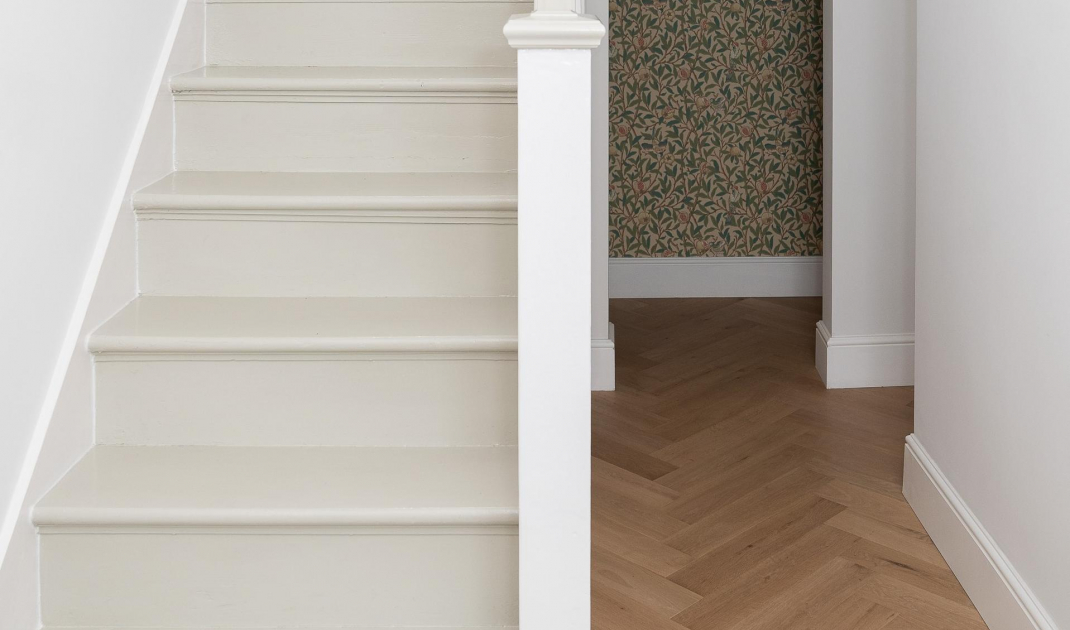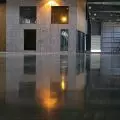Parquet, as a floor finish, was once a luxury solution, which is still highly appreciated today. It is natural, and at the same time extremely ornate. It owes its durability and noble appearance to the specific species of wood from which it is made, as well as to the finishing treatment.
Dark wood parquet
© Unsplash
Parquet will fit into almost any interior style. The shade of the floor will also be of great importance. Thus, we have a choice of different species that differ in color, as well as a variety of wood finishing methods.
Choosing the right material
Parquet is a cheaper finishing material than parquet board, but it should be remembered that it takes much longer to lay. Parquet modules have a length of up to 50 cm and a thickness of usually about 15-22 mm, although there are sometimes thinner 10 mm. It is worth knowing that a significant layer is taken up by sanding, even about 3 mm, so a thicker parquet will allow more times to renew it.
Traditionally, the most suitable wood for making parquet is oak, ash, beech and birch. They are suitable for making planks a maximum length of 30 cm. Exotic woods, on the other hand, such as jatoba, doussie, badi, kempas, merbau, teak, ipe, or sucupira, can be used to make staves longer, up to 50 cm.
Layered parquets vs. underfloor heating
They are glued from two layers, the grain pattern of which crosses over each other. The top layer is made of hardwood, either oak, ash or an exotic species, while the bottom layer is made of softwood or hardwood. These parquets are ideal for use with underfloor heating, as their structure minimizes deformation and is more stable, so there will be fewer gaps and cracks. Dimensionally unstable species are primarily beech, ash, maple, jatoba and wenge.
If the task of the floor is to conduct heat, it should not be thicker than 15 mm. The plank should be properly "warmed" before installation, so that it acquires the temperature that will be used on a daily basis. The maximum recommended value is 27 oC.
However, when choosing parquet as a surface for underfloor heating, let's suggest the manufacturer's recommendations. They should also be consulted when planning to finish the floor in a room exposed to frequent moisture. Hardwood parquet will work best here. Resistant to damage are ebony, coir, guavaak, wenge, iroko, oak, ash, hornbeam and quebracho. Slightly less hard species are hornbeam, robinia, rosewood and yew.
Classic laying of herringbone parquet planks
© Unsplash/Pexles
Parquet pattern
The pattern on the flooring depends somewhat on the species of wood. A given pattern may need to be laid only with those species of wood that do not change significantly under the temperature and humidity conditions in the room. Such will be, for example, doussie, iroko, teak, merbau and oak. Some patterns, such as the popular herringbone or squares, minimize surface deformation.
Flooring for parquet
Even if we take care of the highest quality wood, it won't last very long if we lay it on an unsuitable subfloor. Concrete screed, self-leveling subfloor and floating floor will work best.
To glue the parquet to the subfloor, it will be best to use polyurethane adhesives or MS polymers. It should also be noted that certain types of wood cannot be used with certain adhesives, for example, dispersion glue should not be used to glue beech and exotic wood.
Parquet protection
Every wood floor requires proper protection. This will protect its color and ensure longer durability, resistance to dirt and scratches. We can do this by varnishing, waxing and oiling, which can be applied either hot or cold.
Sanded and whitewashed parquet, as well as whitewashed parquet using the leaching method
© Pexles/Unsplash
Varying the color of the floor
It is natural for wood flooring to change color under the influence of sunlight, usually darkening. The change will be more noticeable in areas where sunlight has direct access. It is worth knowing that certain species darken to a greater extent than others. The use of exotic species, such as doussie and jatoba, should be well considered in rooms with strong sunlight.
Also, inappropriate chemicals for cleaning the boards and the use of too much water for washing can cause color changes and sometimes even warping of the parquet.
Parquet laid in a herringbone pattern using short and long boards and the effect of moisture on parquet flooring
© Unsplash/Pexles
Wood parquet in the bathroom
Exotic species, such as merbau or teak, will work bestin the bathroom. If you want to use layered parquet here, which is highly recommended, it must be created with waterproof adhesives. For protection, oil or oil wax will be best suited. However, we should remember that mino all spilled water should not remain on the surface of the wood for a long time.






































